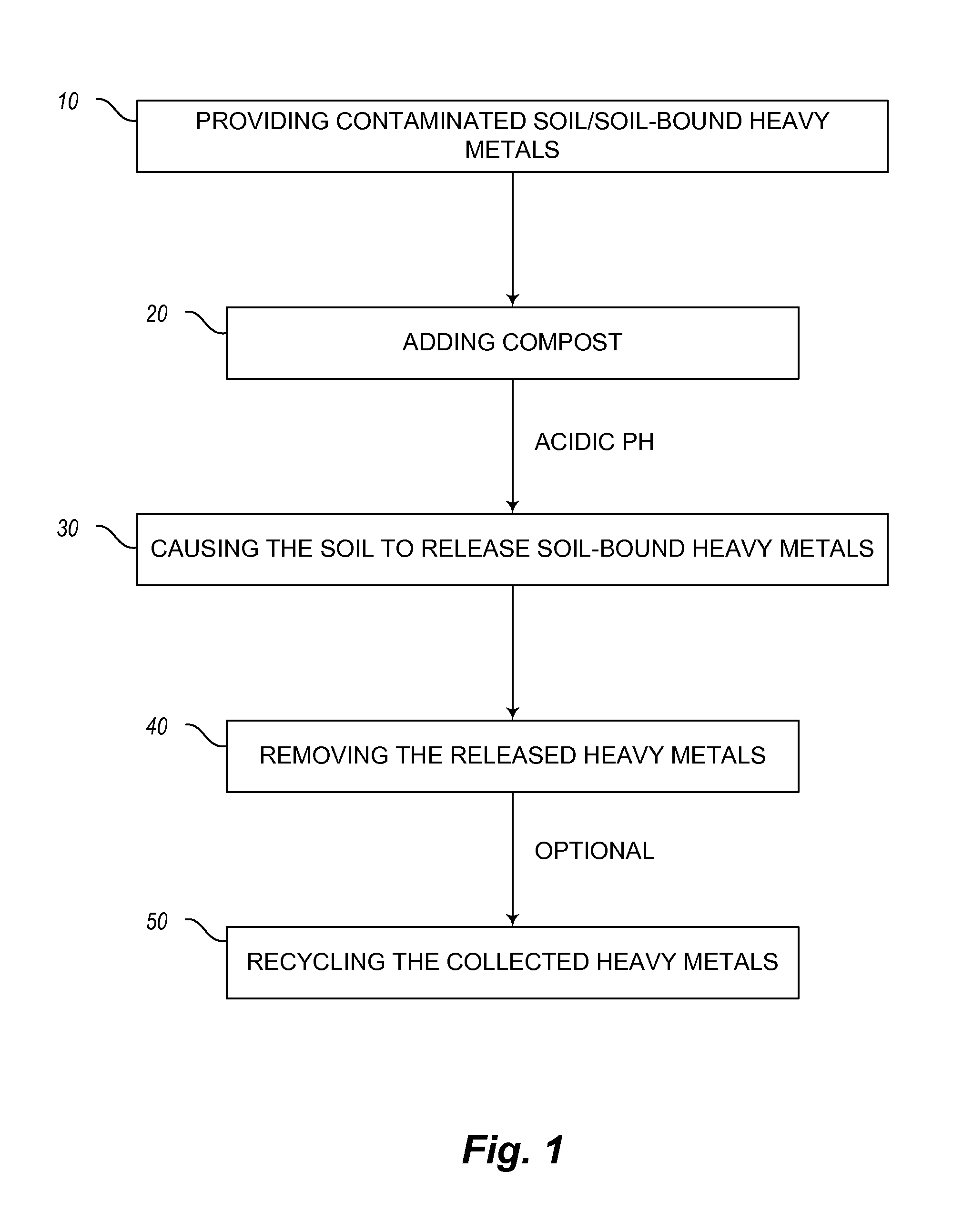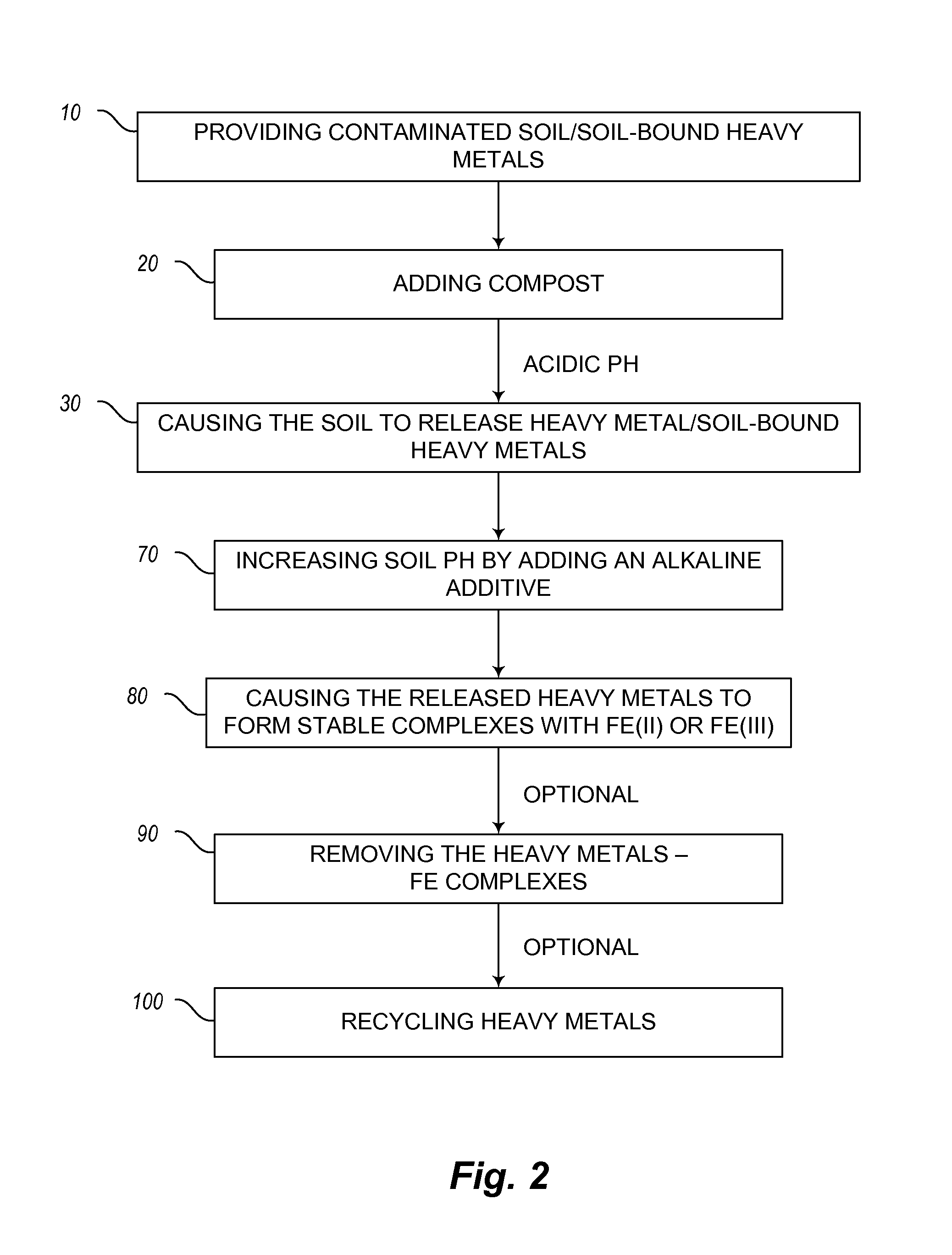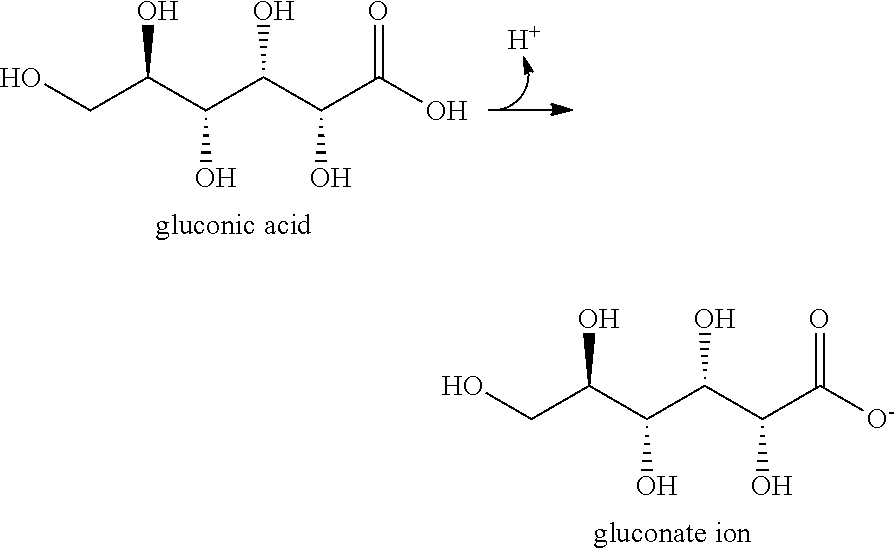Mineral-releasing compost and method of using the same for soil remediation
a technology of soil remediation and mineral-releasing compost, which is applied in soil conditioning compositions, water/sewage treatment by ion exchange, and separation processes, etc. it can solve the problems of large-scale pollution, large-scale pollution, and high cost of conventional techniques, so as to effectively remove heavy metals from soil
- Summary
- Abstract
- Description
- Claims
- Application Information
AI Technical Summary
Benefits of technology
Problems solved by technology
Method used
Image
Examples
example 1
Preparation of Mineral Containing Composts
[0105]The following compost samples were made as detailed below. A no-turn, aerated compost system that contains a compost base of equal parts of wood shavings and horse manures was used in all the samples. The composting process took about 4 weeks to complete, during which the temperature was maintained at about 110-160° F., and the moisture content was maintained at about 50-60%. The composting was considered completed when the temperature dropped below about 105° F.
[0106]Compost A: An initial mixture of 1000 grams of wood pellet (a carbon-rich prebiotic) and 900 grams of ferrous gluconate was prepared. About 8 grams (one tablespoon) of Lactobacillus was then added to the initial mixture. The resulting mixture was then moistened until it was damp to the touch. A ball of the mixture should express a few drops of water when squeezed. Then the compositing mixture was placed in a container permeable to moisture and microbes (e.g., a panty hos...
example 2
Compost Treatment of Heavy Metal Contaminated Soil
[0112]Lead and arsenic-contaminated soil was obtained from the ground of Wenatchee Valley College. Table 2 demonstrates the effects of iron-containing compost in releasing soil-bound heavy metals. All units are either mg / kg (of dry soil), which is an equivalent of parts per million (ppm), or mg / liter for saturation extract.
[0113]As shown, the untreated soil was nearly pH neutral (6.97), which was within the normal range of soil pH. The contents and fractions of lead and arsenic were measured by Wallace Laboratories, LLC (El Segundo, Calif.). The amount of total plant available arsenic was determined by a mild ammonia bicarbonate extraction, whereas the amount of water extractable arsenic was determined by water (pH neutral) extraction. Lead does not dissolve in water in any appreciative amount. However, the untreated soil contained a significant amount of plant available lead (about 60.88 ppm).
[0114]Soil Sample 1 was prepared by mix...
example 3
Heavy Metal Removal and Immobiliztion
[0118]Multiple soil and compost mixtures were prepared to test the reproducibility of soil remediation by treating heavy metal contaminated soil with the compost of the present disclosure. The soil samples were obtained from an abandoned orchard site that was previously exposed to lead-arsenic based pesticides.
[0119]Table 4 shows the results of three samples of soil mixtures (Mix 1-3), in which 250 grams of soil and 100 grams of Compost A were combined (at 2.5:1 ratio). At pH 4.30-4.36, plant available arsenic and lead increased as compared to the untreated soil (see, Example 2), indicating that the heavy metals were released from soil particles at acidic pH.
TABLE 4ArsenicArsenicLead(total(water(totalplantextrac-PlantpHavailable)tion)available)AluminumIronMix 14.309.192.53156.04336.712136.01Mix 24.339.971.84210.10454.032445.56Mix 34.3610.772.38218.30417.382370.16
[0120]Table 5 shows the effect of neutralization of soil pH following the heavy meta...
PUM
| Property | Measurement | Unit |
|---|---|---|
| temperature | aaaaa | aaaaa |
| temperatures | aaaaa | aaaaa |
| temperature | aaaaa | aaaaa |
Abstract
Description
Claims
Application Information
 Login to View More
Login to View More - R&D
- Intellectual Property
- Life Sciences
- Materials
- Tech Scout
- Unparalleled Data Quality
- Higher Quality Content
- 60% Fewer Hallucinations
Browse by: Latest US Patents, China's latest patents, Technical Efficacy Thesaurus, Application Domain, Technology Topic, Popular Technical Reports.
© 2025 PatSnap. All rights reserved.Legal|Privacy policy|Modern Slavery Act Transparency Statement|Sitemap|About US| Contact US: help@patsnap.com



